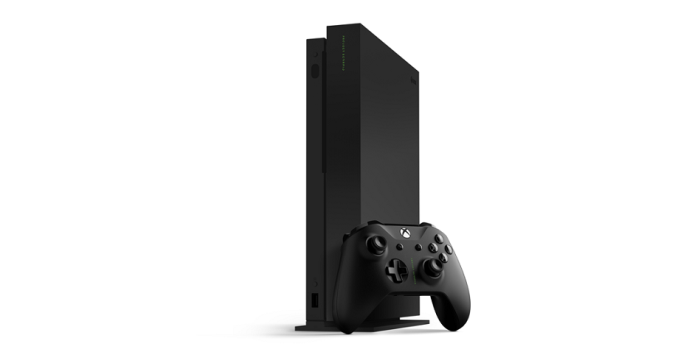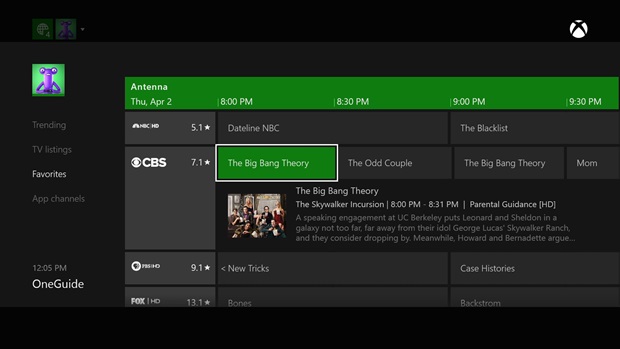The Xbox One X Review: Putting A Spotlight On Gaming
by Brett Howse on November 3, 2017 3:01 AM EST- Posted in
- Consoles
- Microsoft
- Xbox One
- Xbox
- Xbox One X
Power Usage
There’s a lot of performance on tap in the Xbox One X, which never comes with no strings attached. Like the Xbox One S, the APU inside is built on TSMC’s 16 nm FinFET process, which should help keep power usage under control. In addition, the Xbox One X is outfitted with a power supply that Microsoft equates to an 80 Plus Gold unit, which means it should be 90% efficient at 50% load with a 115 V source, and there shouldn’t be too much extra power wasted from the PSU converting AC voltage.
There’s several scenarios we tested for power usage:
Off – Xbox One X is powered off in Energy Savings mode, which means standby mode is disabled.
Standby – Xbox One X is powered off in Instant-On mode, which allows background updating and voice activation enabled (if supported).
Idle – Ethernet connected, no disc in the drive, system idling at dashboard.
Load (UHD BD Playback) – Ethernet connected, UHD Blu-Ray disc in the drive playing Planet Earth II, compared to The Hobbit on Blu-Ray on the original Xbox One.
Load (GoW4) – Ethernet connected, no disc in the drive, playing Gears of War 4 in UHD/HDR.
Load (The Wolf Among Us) – Ethernet connected, no disc in the drive, playing The Wolf Among Us in FHD SDR.
We’ve been able to compare against the original Xbox One, although not the S model as we didn’t have one on hand. The Wolf Among Us was chosen as an older game which caps at 1080p and SDR, and Gears of War 4 shows the power draw at full 4K HDR rendering. The comparison against the original for this game will of course be for the 1080p version though, since that’s the max it supports.
| Power Consumption Comparions | |||||||
| Total System Power | Energy-Saving | Instant-On | Idle | Load (UHD BD) | Load (GoW4) | Load (The Wolf Among Us) | |
| Xbox One | < 2W | 14.2W | 53W | 80W | 107W | 102W | |
| Xbox One X | < 1W | 10W | 56W | 64W | 172W | 101W | |
As with the original Xbox One, when Instant On is disabled, the console is practically fully off. There’s a small amount of draw, but overall, not very much. Most people that use the console are going to likely want it in Instant On mode though, so games and the console can update while the system is off, as well as to provide a much quicker startup time, and games can remain loaded in RAM. In Standby mode, power draw is reasonable at 10 W, which is lower than the original console when it first launched. It’s still a fair bit of power, but when you factor in that it needs to keep 12 GB of GDDR5 memory powered up (among other things), it is not unreasonable to expect this amount of power draw.
Idling at the dashboard draws around 55 W, and to add to that, most non-gaming tasks don’t add very much to this total, if any. If you’re using your Xbox to passthrough HDMI from a cable box, it will take this same power draw. Maybe this would be an impossible pipe dream, but it would be nice to see the Xbox One also pass through HDMI when it is in Standby mode.
Playing back a UHD Blu-Ray (standard Blu-Ray on the original Xbox One) was a tiny bit higher than idle, which is good to see. Some of the draw would be the disc drive itself, but a lot of the playback would be offloaded to fixed function hardware in the media block so it’s not surprising to see it so close to idle.
Clearly gaming on older Xbox One games is not much of a chore for the Xbox One X, since the power draw is only about 50 W over idle. But, when gaming with an Xbox One X Enhanced title, such as Gears of War 4, the power draw jumps significantly to 172 W as the peak observed. This is quite a jump over the original console, and makes the cooling system, which is barely audible even under these loads, even more impressive. Compared to a high-end gaming PC though, the power draw is quite a bit less.












128 Comments
View All Comments
cmdrdredd - Saturday, November 4, 2017 - link
As for cloud storage for saves, MS gives you unlimited save storage.orderdrake - Saturday, November 4, 2017 - link
How is those console able to get 4k when higher tier computers struggle with 4kcmdrdredd - Saturday, November 4, 2017 - link
Sometimes it's not really 4k. It uses an upscaling technique to achieve it in some cases. A game may not be rendered at 4k at all but is output at 4k.vladx - Saturday, November 4, 2017 - link
Indeed, it's basically video rendering enhancements.Zan Lynx - Monday, November 6, 2017 - link
It has plenty of video RAM, which is the secret. Obviously 4K graphics needs more GPU processors too, but if there isn't enough RAM for textures and frames then there's no space for the processors to work in.This XBOX has plenty of VRAM so 4K is no problem.
andreabelly - Saturday, November 4, 2017 - link
I am very lucky that i get it this one also i got lots of interesting blog here thank you so much.https://webhostingonedollar.com/
risa2000 - Sunday, November 5, 2017 - link
Great write up! It makes me happy to hear that MS started taking things seriously and thinks them through also on the technical and not only marketing side.peevee - Monday, November 6, 2017 - link
56W idle? What is wrong with them.Rufnek - Monday, November 6, 2017 - link
"9 GB of RAM is available to developers, with 3 GB reserved for the system to handle multi-tasking and rendering the dashboard in 4K."...so why are other sites reporting that the dashboard is in 1080p and absolutely not 4k?? They mentioned that the dashboard was supposed to be 4k but ended up reallocating the necessary RAM to the game usage side and hard limited the dashboard to 1080p.
Rufnek - Monday, November 6, 2017 - link
Is anyone else disappointed that the X can't even run games like GEARS of war 4 at 1080p/60fps with disabling stuff????? e.g. dynamic shadowsI wish the target would have been checkerboard 4k, full everything, at 30fps OR 1080p/60fps full everything.